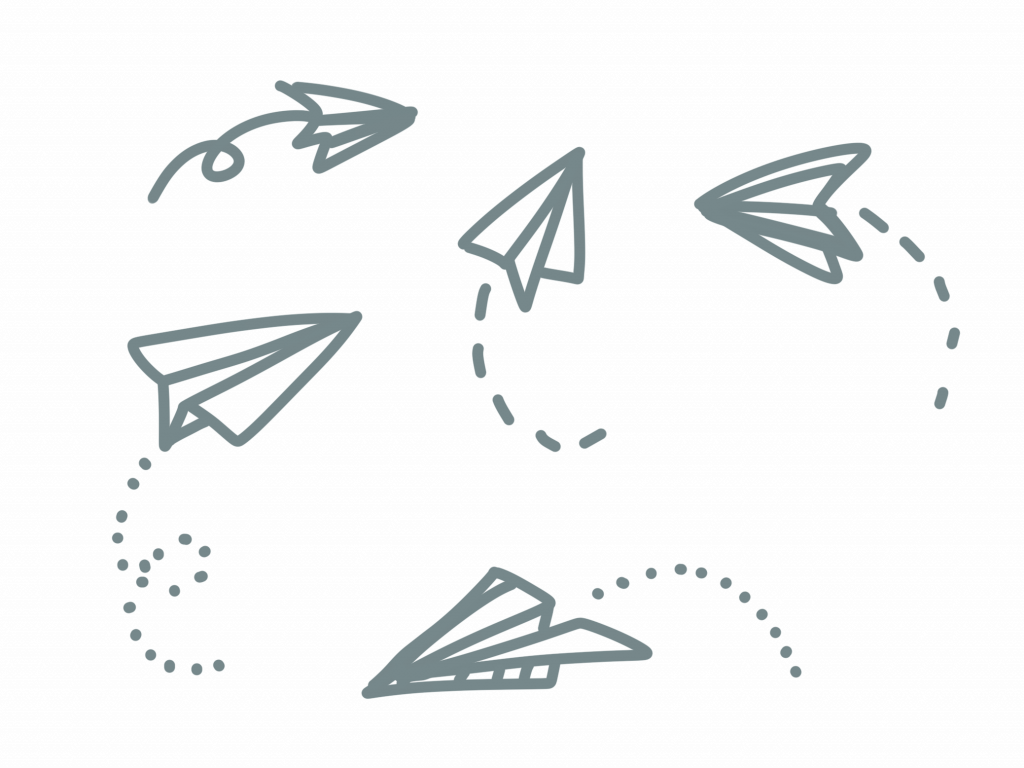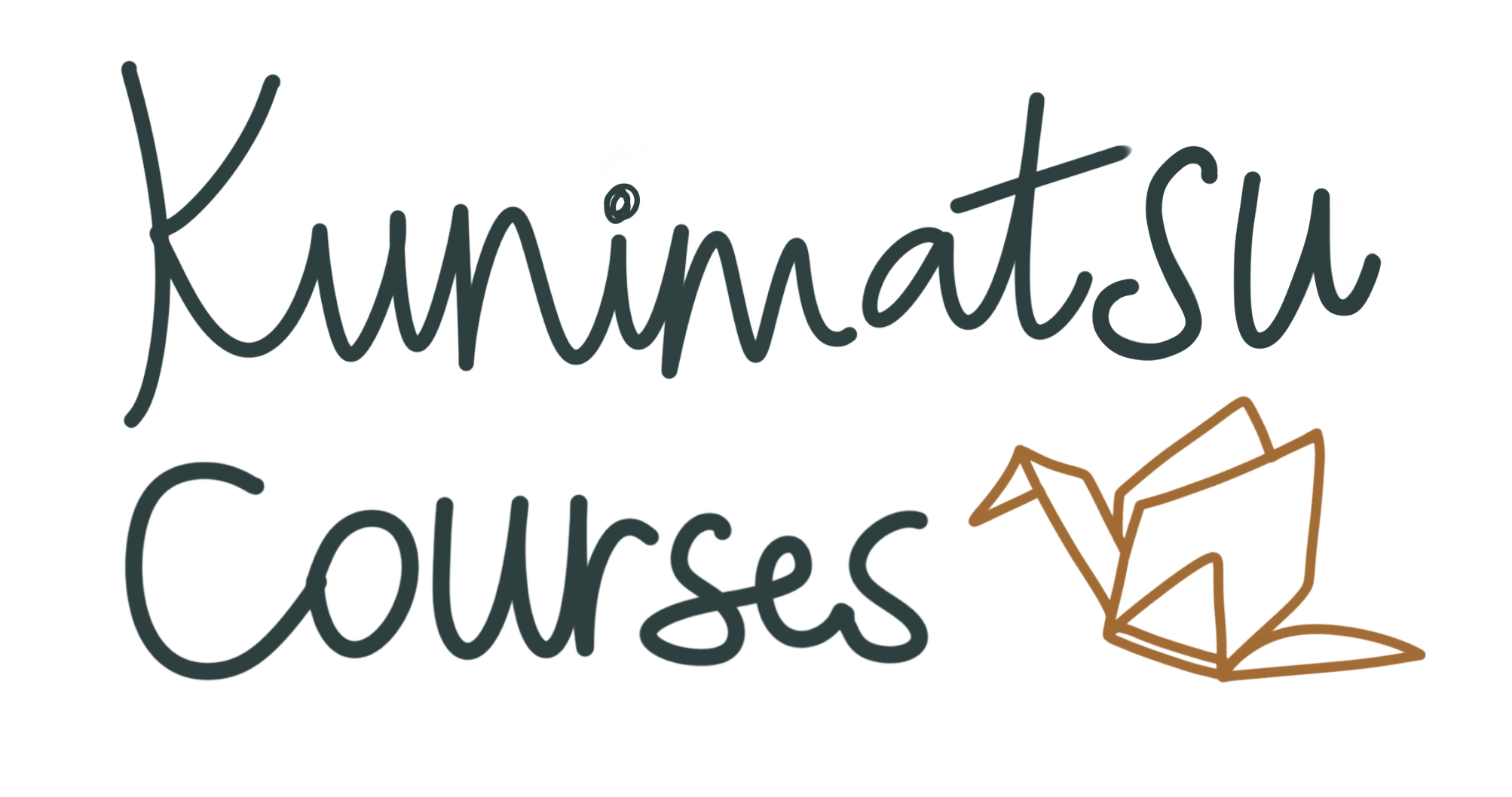About The Model
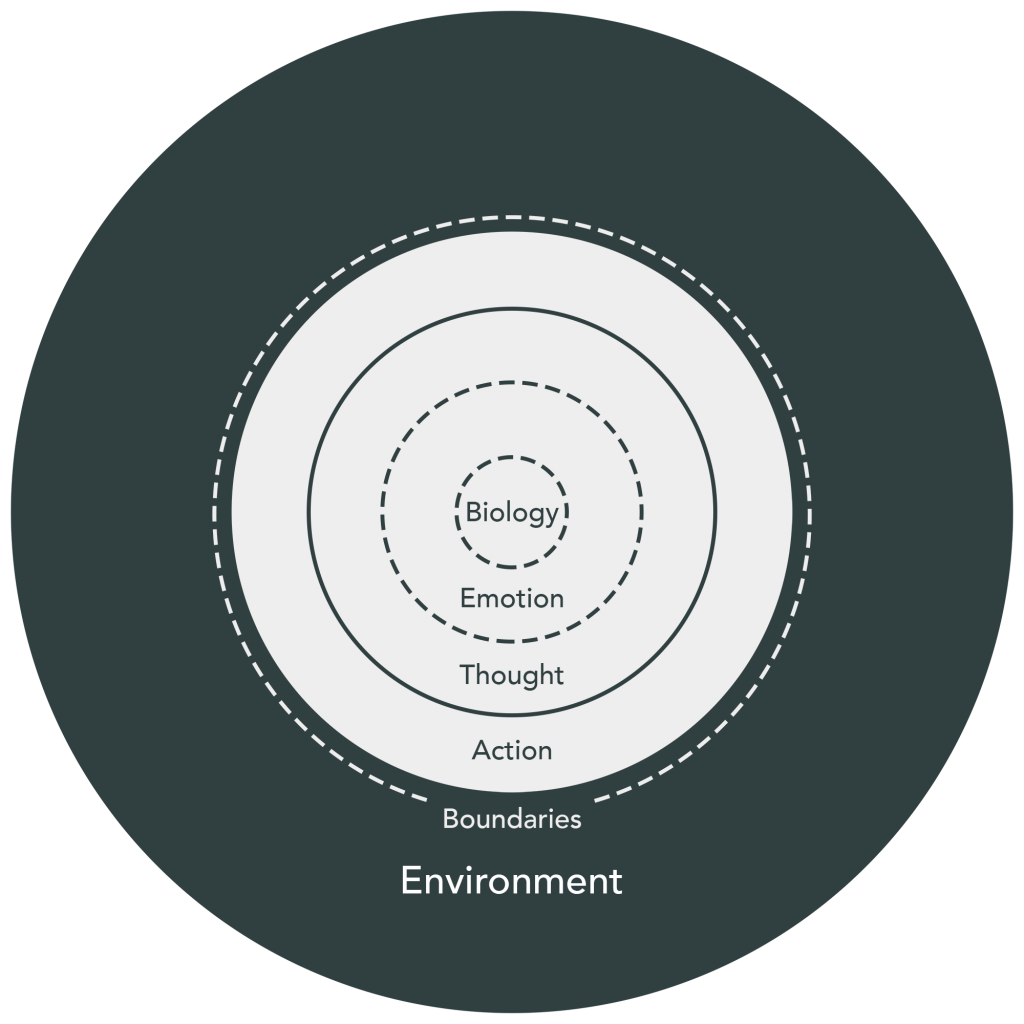
Workshops from Kunimatsu Courses are structured around what will be referred to as simply “The Model,” which illustrates the various ‘levels’ on which psychological experiences occur for an individual in the context of their environment. Additionally, dotted and solid lines distinguish the different nature of relationships between levels, with dotted lines signifying levels that overlap more than ones with solid lines, as well as levels where we have less volitional control.
At any given moment, in any given situation, we are having experiences simultaneously across all of these different levels, which gives us a LOT of stuff we can examine, analyze, and work with. Using the Model as a guide, we can more thoroughly explore the different contexts in which people can develop specific skills to create meaningful change, level by level.
The Emotion Level
The Emotion level of the Model is situated between the levels of Biology and Thought, with dotted lines to indicate that Emotional experiences have both physical and cognitive components to them. Additionally, the dotted lines of the emotion level indicate a low amount of volitional control, meaning that most of the emotions we experience will be involuntary and automatic reactions, rather than states we selectively enter into with conscious intention. The automatic nature of emotion is the main reason that it is typically the first level covered in any workshop.
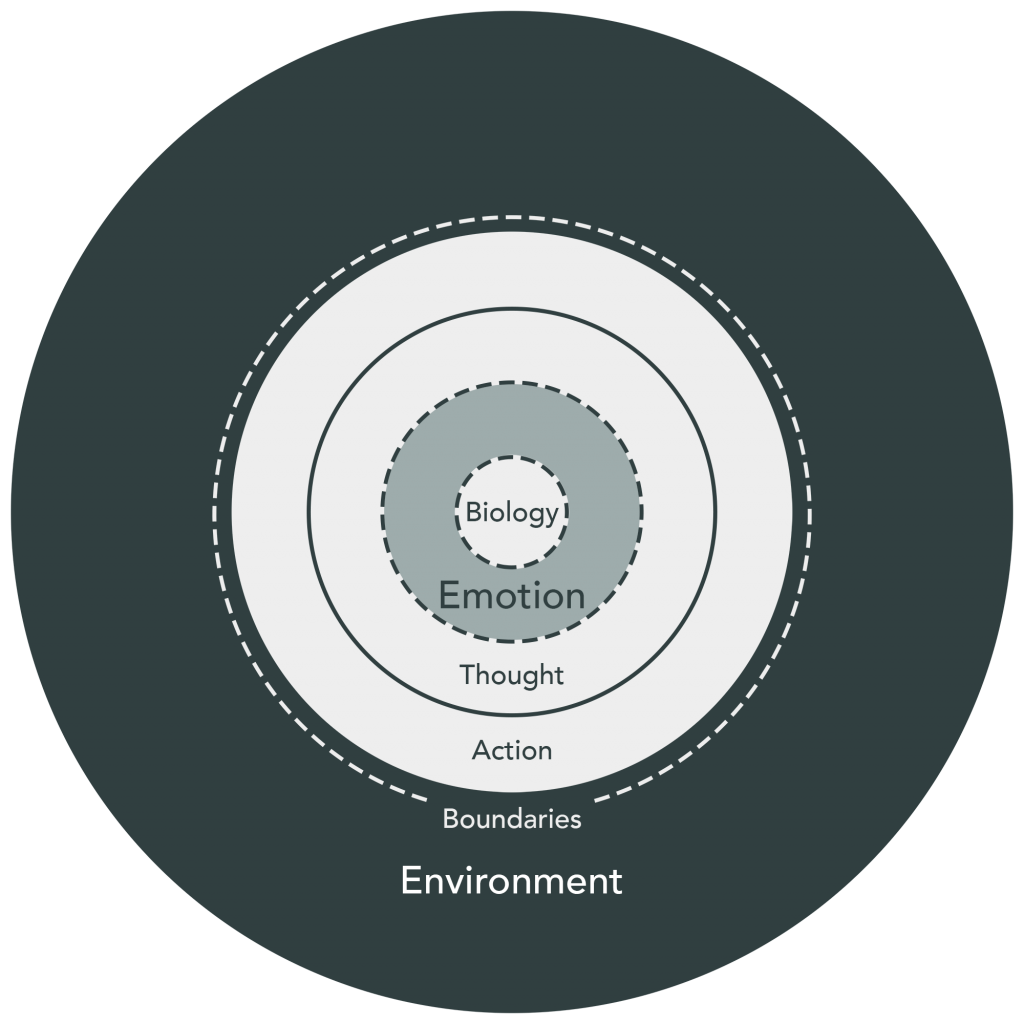
The Thought Level
The Thought level of the Model (also called the Cognitive level) is between the levels of Emotion (a dotted line) and Action (a solid line). Cognitive experiences include a range of things such as contemplation, manipulation, or other engagement with ideas, images, mental representations, and other hypothetical elements. Thoughts can be verbal and nonverbal, logical and emotional, voluntary and automatic, and every possibility in between. Often it is our thoughts that prompt our actions, so this level merits a considerable amount of attention with regards to making meaningful change.
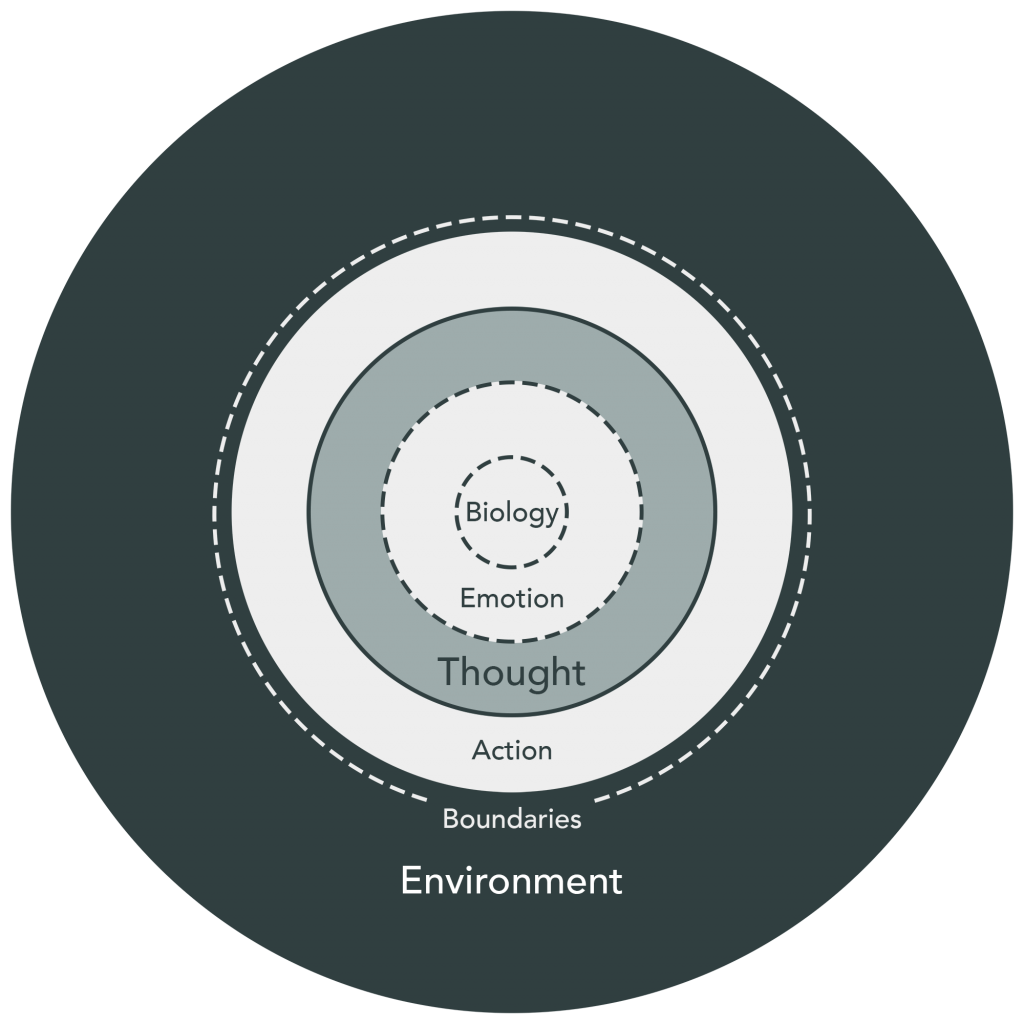
The Action Level
The Action level of the Model (also called the Behavior level) is the outermost level of the individual experience before the external Environment comes into play. Action is bordered on both sides (Thought and Environment) with solid lines, which means that it is often the most distinct and clear of any of the Model levels, and it is the level where we have the most control. Action refers to any self-initiated sequence of behaviors (or a notable absence/inhibition of behavior), and can be prompted by both internal (Thought, Emotion) and external (Environment) stimuli.
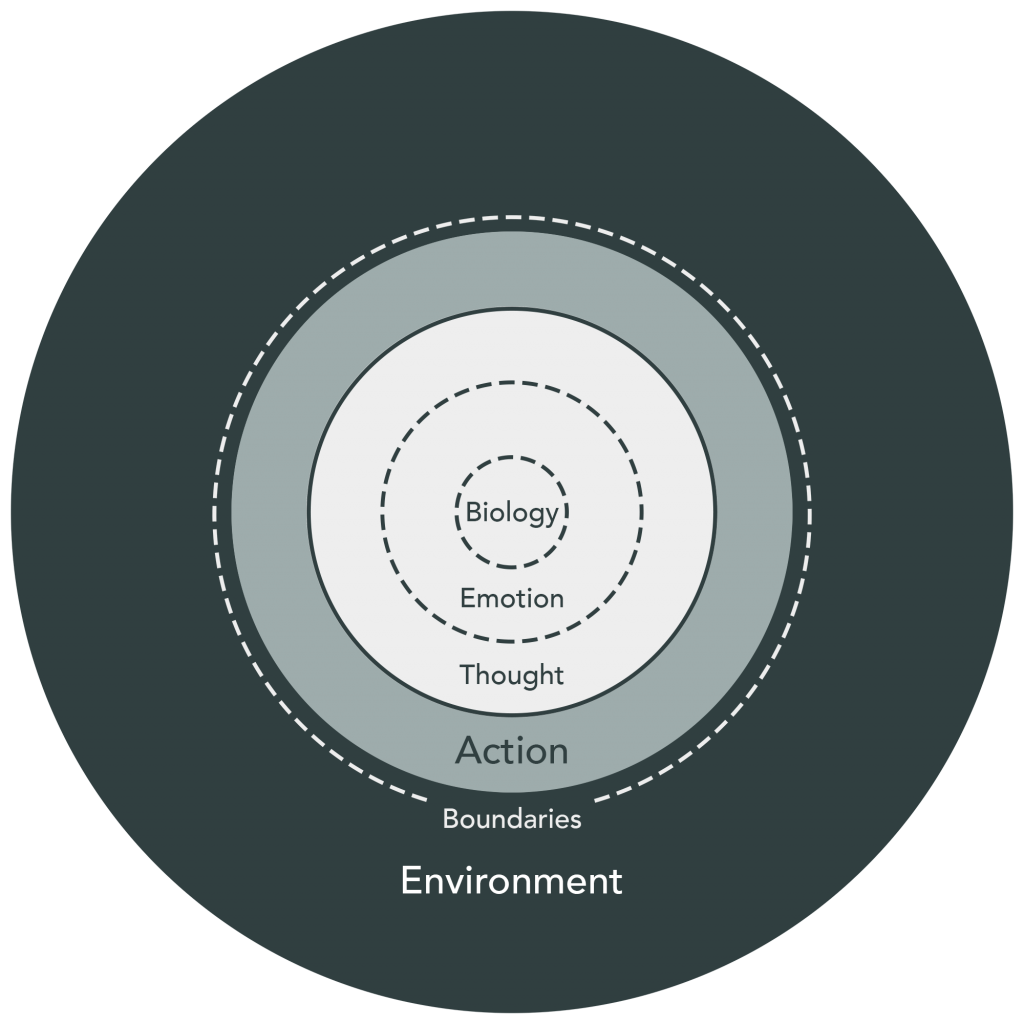
The Boundaries Level
Although not considered a core component of the Foundation workshops, which cover Emotion, Thought, and Action, the Boundaries level is one that will be explored in multiple Focus workshops and worth mentioning here. The term Boundaries refers to the implied limits of an individual with regards to the Environment and the different roles, relationships, and responsibilities they have within it. The Boundaries line is dotted due to its overlap with the Environment and the likelihood that an individual’s boundaries may vary considerably across different contexts.
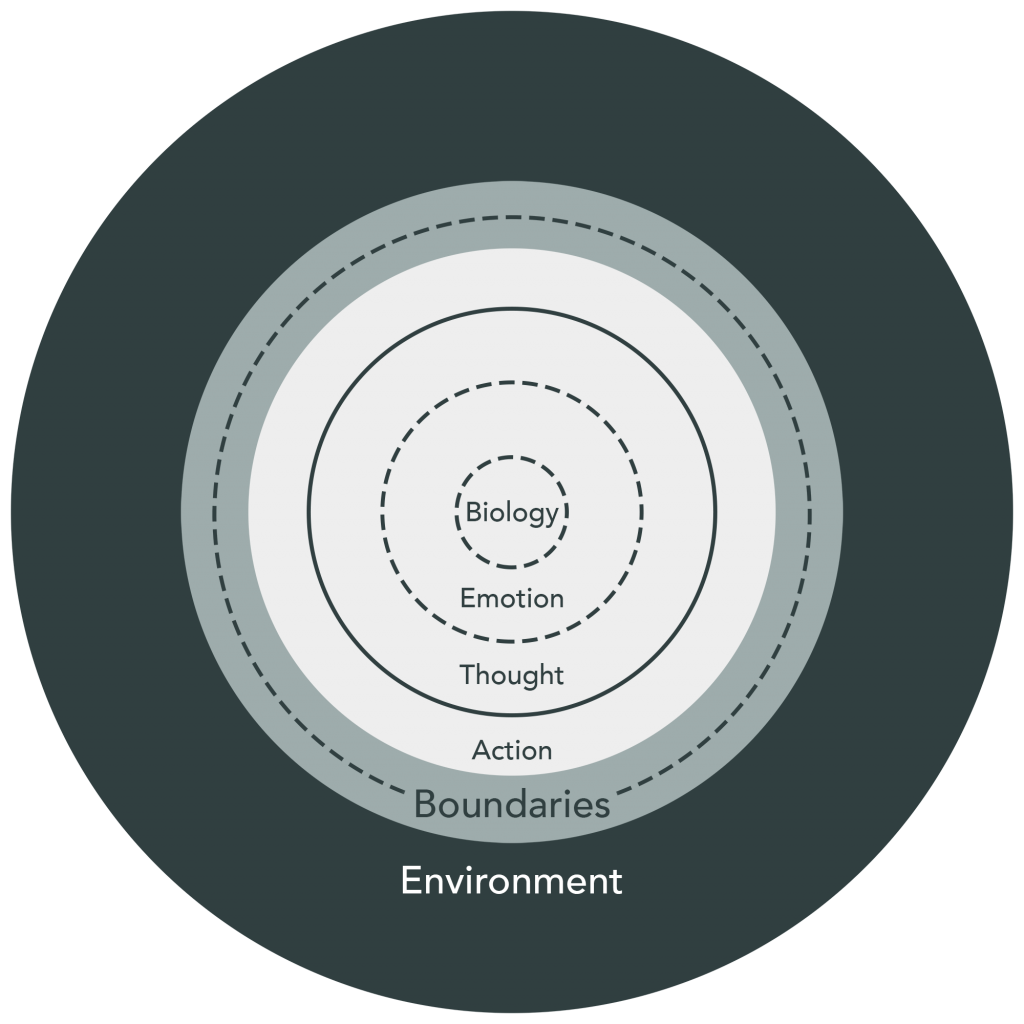
To learn more about the Model and how we can apply it to our personal development, be sure to check out the Workshops
Disclaimer
Please note that all Kunimatsu Courses workshops should be used for self-help purposes ONLY and are not intended to diagnose or treat psychological illnesses or their associated dysfunctions. The information contained in Kunimatsu Courses workshops is in NO WAY intended as a substitute for psychotherapy services with a licensed professional.
Let’s stay in touch!
Want to be the first to know about new offerings? Sign up for my newsletter to receive an update any time a new workshop is posted AND get exclusive access to a Free Introduction Workshop that is only available through the mailing list!
